9 Tips for Mixing and Matching Tile Styles
http://decor-ideas.org 05/25/2015 03:14 Decor Ideas
For tile fans such as myself, the more tile, the better. But though I’d happily cover every surface with it, there are certain things to consider when combining tiles of various sizes, shapes and patterns on walls and floors. Because tiling large areas requires a sizable investment, it’s worth getting samples and experimenting with how tiles work together. These nine tips offer guidance on how to combine tiles for the best look.
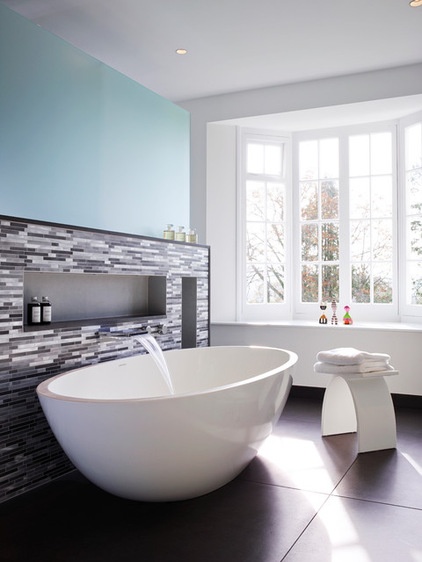
1. Balance busy patterns. Use small statement tiles, such as these oblong mosaics, to create a feature on a backsplash or another small area rather than across an entire room. Combine them with large-scale plain tiles and you’ll avoid a design that makes your eyes go funny.
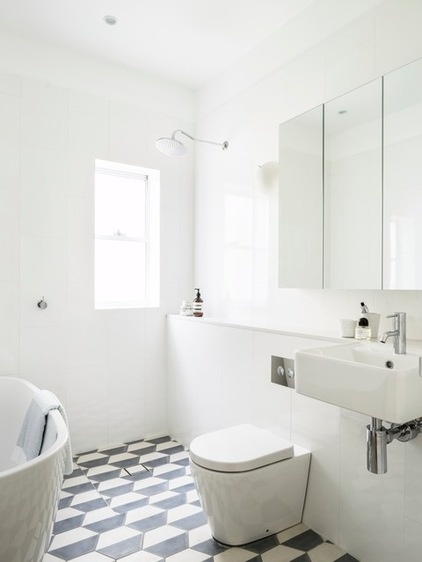
2. Pair pattern with plain. Restrict your use of patterned tiles to one surface — either the floor or a feature wall. Here, contemporary hexagonal tiles take center stage, while large-scale oblong wall tiles provide a light-enhancing glossy background.
Bathrooms Awash in Black and White Tile
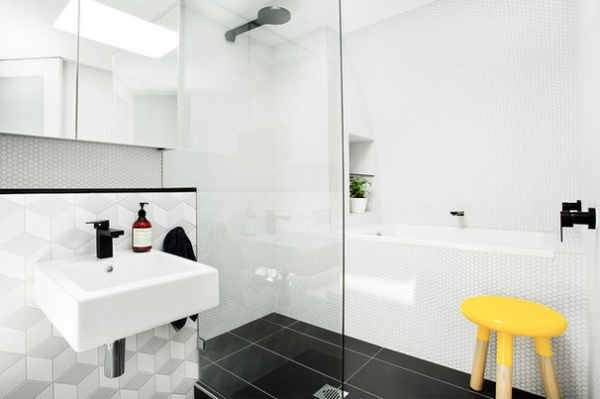
3. Play with scale. One of the most important tips for mixing tile well is to create balance by combining small- and large-scale patterns. In this bathroom three tile types are combined successfully: tiny hexagonal mosaics on the bath and walls, medium hex tiles on the basin surround and large oblong tiles on the floor. The monochrome palette helps create a harmonious whole.
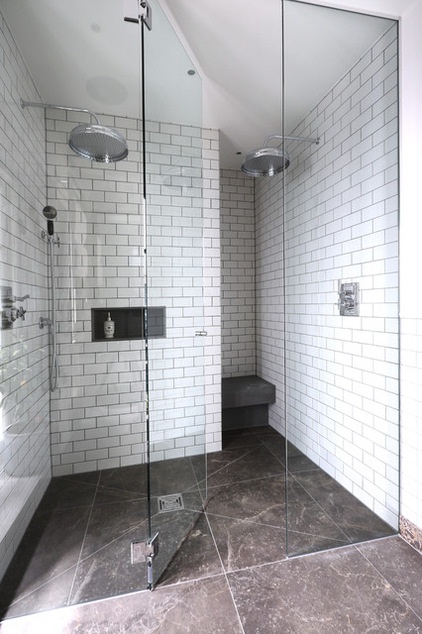
4. Treat stone as a neutral. Floor-to-ceiling subway tiles with gray grout make a statement in this supersize shower. To soften the graphic grout lines as well as to create a cohesive design, pair them with natural gray stone, which adds visual interest with a neutral pattern that doesn’t try to compete.
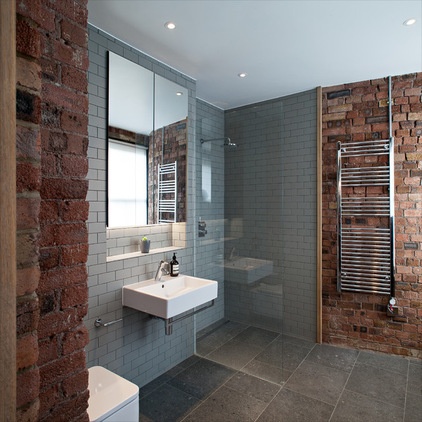
5. Combine matte finishes. For a bathroom with tactile appeal, choose two types of matte tile and break up large areas with an alternative surface, such as this exposed brick, or with plain painted walls.
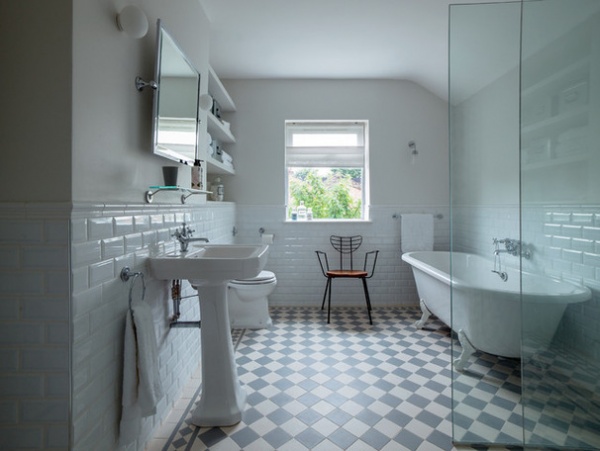
6. Juxtapose matte and glossy. Get away with combining similar-size tiles and busy patterns by choosing one matte style and one shiny. These high-gloss, beveled-edged subway tiles work beautifully with the soft encaustic finish of the monochrome floor tiles.
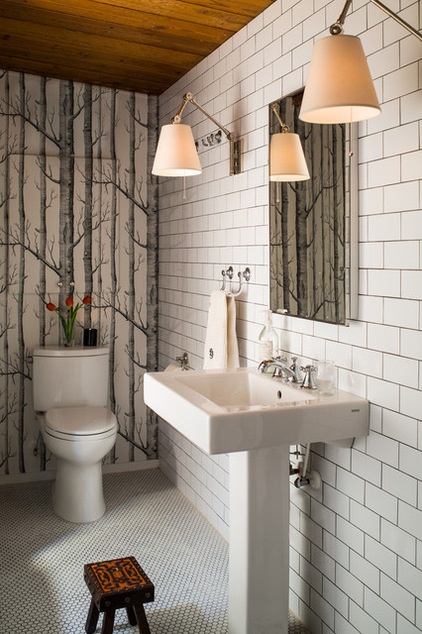
7. Vary shape, not color. For an easy mix that works in any space, take two tile designs in the same solid color but different shapes and let the grout lines form the pattern.
For a pronounced effect, choose a contrasting shade, like this dark gray grout, which is paired with white subway tiles and tiny hexagonal mosaics.
Subway Tile Wainscoting Puts Bathrooms on the Right Track
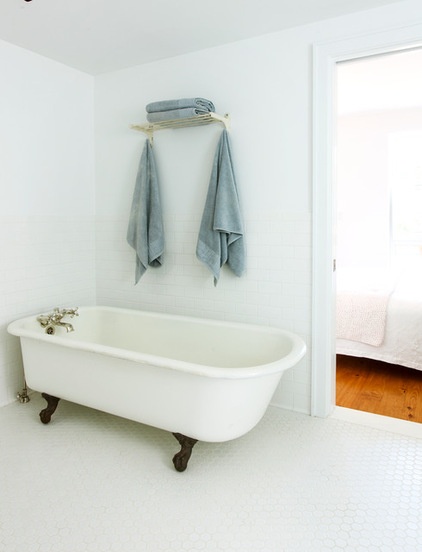
If you like your tiling to create subtle interest but for the overall look to make less of a statement, use matching grout. This bathroom features the same combination of tile types as the previous image, but coordinating white grout makes a huge difference in the finish and feel of the space.
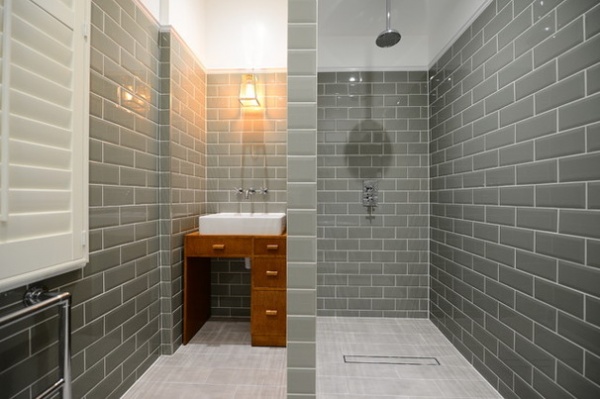
8. Be consistent with pattern. Use tiles in different sizes and colors, but keep the shape consistent for a harmonious effect. This bathroom includes oblong tiles in two colors and two sizes, but the same brick pattern on each surface creates a visual connection between the planes.
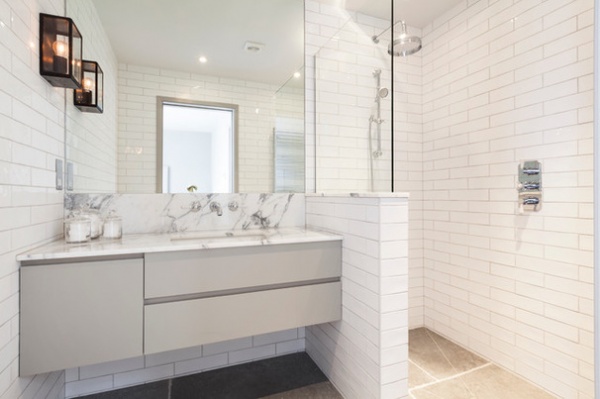
9. Limit your color palette. For a bathroom with a lot of different surfaces, minimize competition between patterns by choosing a restricted color palette. With just gray and white throughout, this shower scheme feels elegant and cohesive.
Tell us: How have you mixed and matched tile in your home? Share your tips and photos in the Comments below.
More:
How to Choose the Right Tile Layout
‘Weave’ Stone Tile for an Elegant Bath
Related Articles Recommended












